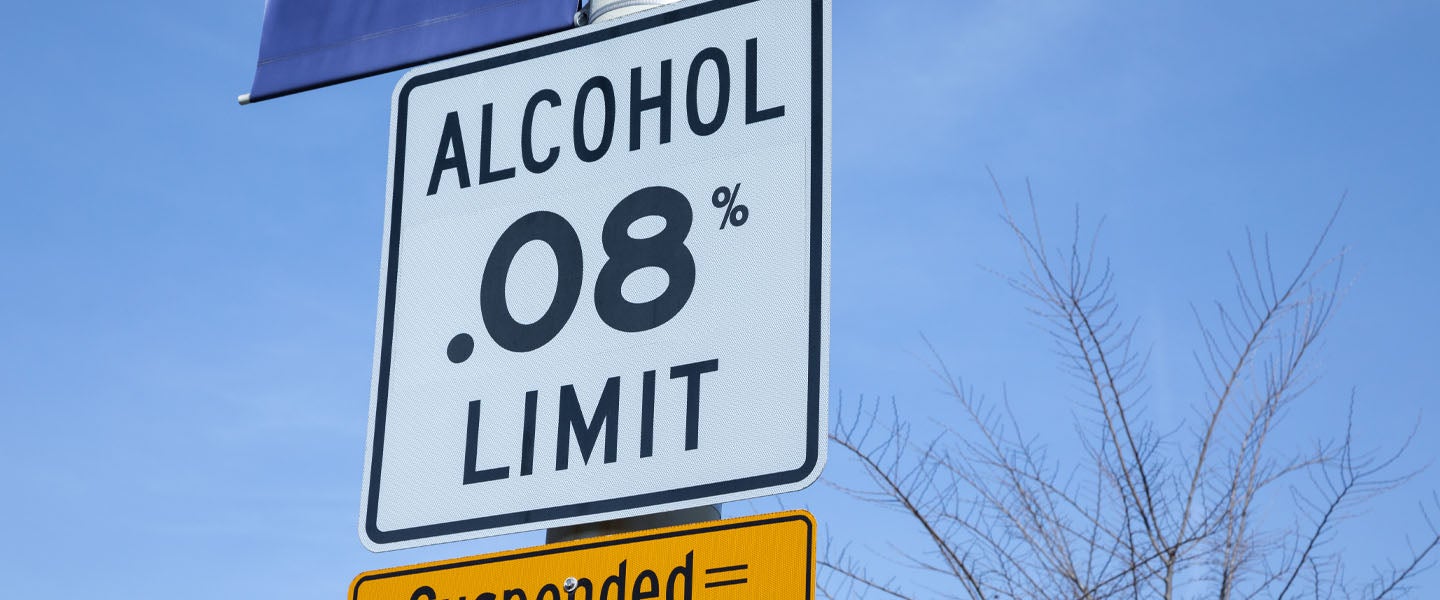I have always struggled with numbers. I must have been sick the day they taught us how to tell time in elementary school because I still fuck that up; I have no idea what the mathematical difference between a permutation and a combination is; metric conversions are the devil and my high school calculus homework reduced me to tears.
And yet, I respect them: Numbers never lie; you cannot argue with them. This is especially true (and important) when it comes to setting legal limits — like the 0.08 percent blood alcohol concentration that makes us legally too drunk to drive.
But why 0.08? Why not make it easy for everyone and call it 0.1, or 0.05? Where is the harm in 0.09? Why put a number on it in the first place?
A Long, Shameful History of Shitfaced Driving
Once upon a time, there was no such thing as drunk driving. Wait, that’s not true — there was no such thing as illegal drunk driving. People have presumably been driving drunk since cars hit the streets in 1896, but it wasn’t a crime to do so until 10 years later.
In 1897, a London cab driver by the name of George Smith found an ugly way into the history books when he drove his taxi into a building. The 25-year-old became the very first drunk-driving arrest. His fine? Twenty-five shillings.
In the States, the first law against driving while intoxicated was enacted in 1906 (in New Jersey, naturally). New York followed in 1910, and while most states followed suit shortly thereafter, there was no codified standard of what “too drunk to drive” consisted of, making it nearly impossible to enforce and even tougher to prosecute. It wasn’t until 1941 that laws specifying a legal blood alcohol concentration (BAC) limit were passed.
And what was that legal limit? Are you sitting down?
The answer: 0.15 percent, nearly twice the legal limit all 50 states enforce today.
Don’t stand up yet.
Ready?
In some states, it remained legal to drive with up to a 0.15 BAC — until finally, in 2004, Delaware became the last state to adopt 0.08. Yes: Fifteen years ago, you could still legally drive utterly shitfaced in Joe Biden’s state. Now, state legislators want to reduce it even more, as low as 0.05. But is that really necessary? How did we land on 0.08 anyway?
The Magic Number
According to research by the National Highway Traffic Safety Administration in the late ’90s, virtually all drivers are impaired with a BAC of 0.08, regardless of sex, weight or driving experience. At this level of intoxication, drivers are less capable of braking, steering, lane changing, good judgment and successfully dividing their attention. The Foundation for Advancing Alcohol Responsibility reports that the fatal crash risk at .08 BAC is at least 11 times that of a sober driver.
Here’s how increased BAC affects your brain and body:
- 0.01–0.03: No apparent effects. Slight mood elevation.
- 0.04–0.06: Feeling of relaxation. Sensation of warmth. Minor impairment of reasoning and memory.
- 0.07–0.09: Mild impairment of balance, speech, vision and control.
- 0.10–0.12: Significant impairment of motor coordination and loss of judgment. Speech may be slurred.
- 0.13–0.15: Gross impairment of motor control. Blurred vision and major loss of balance. Onset of dysphoria (anxiety, restlessness).
- 0.16–0.20: Dysphoria predominates. Nausea may appear. Drinker has the appearance of “sloppy drunk.”
We all recognize these signs and symptoms: They’re the most common markers of a night out drinking, from pleasantly buzzed to dude, you need to go home.
There’s nothing remarkable about these effects: Alcohol is a depressant, and the more of it that builds up in your body, the more your body is going to, well, shut down. While it may take different amounts of booze to create the same level of intoxication, I think we can all agree that anything past “mild impairment of balance, speech, vision and control” is too much of a good thing, not where you want to find yourself, and certainly, without a doubt, past the point where anyone should even be thinking about driving.
In 1997, alcohol-related car crashes were killing 17,000 people a year and accounting for over 40 percent of traffic fatalities in the U.S. In 1998, with pressure from the advocacy group Mothers Against Drunk Driving, 16 states had dropped the legal driving BAC limit from 0.15 to 0.08. In 2001, alcohol-related traffic fatalities had dropped 7 percent.
What About Tolerance?
I get it: You drink a lot. You can really hold your liquor. Your friends know not to try to keep up with you. Friend, the cops don’t give a flying fuck.
Drivers with a BAC between 0.08 and 0.14 account for 25 percent of drunk driving deaths; 65 percent of fatalities are caused by drivers with a BAC of over 0.15.
While tolerance is certainly a thing (although I wouldn’t say something to be proud of), it’s never worth it — for your arrest record or the people you could hurt.
Numbers never lie: Drunk driving fatalities might be in decline, but drunk drivers still kill over 10,000 people a year.
Still, it’s clear drunk driving laws have drastically reduced the number of largely preventable deaths in the country. Thanks to mobile apps for cars on demand, I’d guess many young drinkers never consider getting behind the wheel when they’ve been out.
So what’s the next frontier for drinking safety?
There is an intoxication danger we don’t often talk about — an issue that’s now front and center in the world of bartending: What happens when someone stumbles away from the bar and out the door, on foot? There’s a lot that could happen to her between the bar and the cab. That’s why I’m big on bystander intervention. After all, my business is all about making people feel at home. Making them get home safely is just the next step. No knowledge of numbers required.

